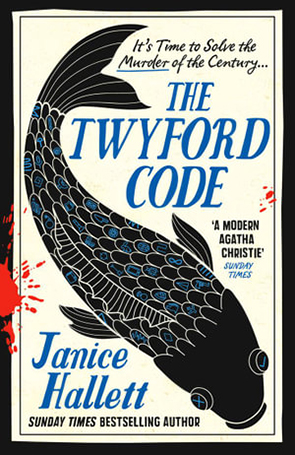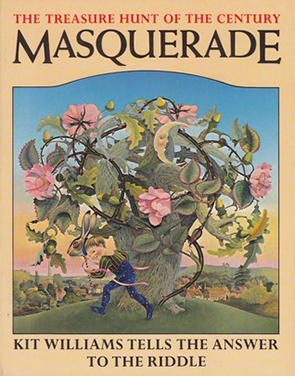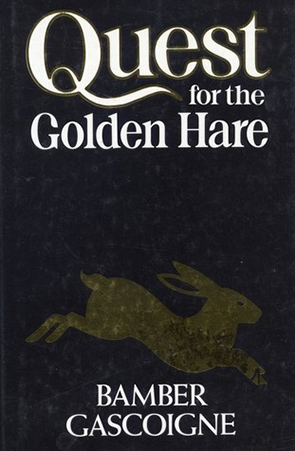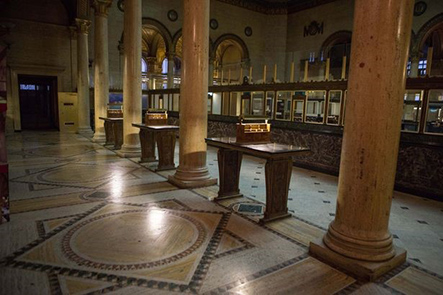The Twyford Code is one of the cleverest mysteries I have read in some time. I was initially attracted to it by a comment on the back cover about Enid Blyton meets Agatha Christie: I mean, as someone who grew up reading Enid Blyton and then shifted over the Agatha Christie as a teenager, how could that description be resisted? I didn't even try. And for most of my reading of this book, it met my expectations of being a light, enjoyable read; one that was just good fun. But near the end, the story suddenly takes a massive twist that completely changes what you think about everything you've already read. I loved it.
Our main ‘narrator’ is Steven Smith. Steve has just been released from a long term in prison and has become obsessed with finding out what happened to a favourite teacher who disappeared on a school trip in 1983 when he was 14, soon after he showed her a book he’d found on the bus. The book was by Edith Twyford, a prolific but no longer popular writer of children’s books. Twyford is pretty much based on Enid Blyton, an author who wrote many series about groups of children who regularly team up to solve mysteries. There are parallels between Twyford’s and Blyton's lives: both lived in Bournemouth, both died in 1968, and both receive condemnation by modern critics. In The Twyford Code, Twyford’s books are described as “HORRIBLE, nasty, sadistic, moral little tales full of pompous superiority at best and blatant racism at worst.” This is pretty close to this description I found on Blyton's Wikipedia page: “elitist, sexist, racist, xenophobic, and at odds with the more progressive environment that was emerging in post-World War II Britain.” The inspiration for the treasure hunt based on Twyford’s novels is drawn from Masquerade by Kit Williams. See the side bar for more information.
The story, itself, is told through transcripts of voice notes Steve has recorded on an old iPhone. Steve only learned to read while in prison and isn’t too good at writing yet, so he finds the voice recording function useful for making notes. Most are like diary entries as Steve either describes what he has learned or diverges from his main story with anecdotes from his past life. Some are recorded conversations with other people. The transcripts, themselves, are amusing, as the software has to interpret the recordings and sometimes comes out with unusual phrasing, especially when it has to translate Steve’s rough London accent. The missing teacher, ‘Miss Isles’, for example, becomes ‘missiles’ in the transcripts, and ‘must have’ frequently becomes ‘mustard’.
Steve slowly learns that Twyford’s books are thought to have a code contained within them, which, if solved, will reveal a great secret. There are a lot of people devoted to solving the code, but opinion is mixed on what the secret will be, including that it is a key to stolen gold, nuclear weaponry, a secret portal to a parallel utopian society, evidence of alien visitations, or even a cure for cancer. These are only of few of the ideas that are suggested over the course of the story. There is a lot of fun to had in searching out the secret of the code, and it turns out there are many who have become involved more for the pleasure of joining the search than for any real expectation of actually finding a treasure.
Intertwined with Steve’s record of his investigations, we slowly get his own story, from his early abandonment by his parents, his struggle at school, his gradual involvement with a crime family and eventually the crime that led to his long imprisonment and its consequences. By itself, Steve’s story would be a good one anyway, but when you add in the mystery of the code hidden in the books, you get a fascinating tale that gets darker the more that is revealed.
Steve is a wonderful character. You are led to think at the beginning that he’s a bit slow and simple, but gradually you realise that he is a lot smarter than he seems. He has a very straightforward way of viewing the world that punctures the pomposity of many of the people he meets, especially those who look down on him. His long prison term has left him unfamiliar with many aspects of modern life, especially pop culture. There is one great exchange where he and Lucy (a young librarian who initially just feels sorry for Steve but who gradually gets drawn into the mystery of the code in Twyford’s books and helps him solve the puzzles) break into an old abandoned bank building, Martins Bank in Liverpool, following a clue they have found in a photo of Edith Twyford. Lucy recognises the interior from a movie and comments to Steve that she thinks Harry Potter was shot here. Steve responds that he should have planned his job better, assuming Harry Potter is a failed bank thief. Steve seems to be ill-equipped for the straight life he seems determined to follow in an unfamiliar world, but as we hear his story, you really want him to succeed: for there to really be something hidden in Twyford’s books and for Steve to be the one who finally solves the puzzle.
This was an addictive read, one that I’m sorry eventually had to come to an end. Highly recommended for anyone in search of a very, very, very clever mystery.

 RSS Feed
RSS Feed Facebook
Facebook Instagram
Instagram YouTube
YouTube Subscribe to our Newsletter
Subscribe to our Newsletter








No one has commented yet. Be the first!